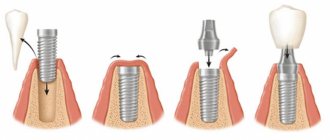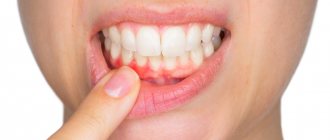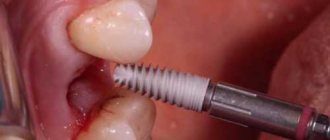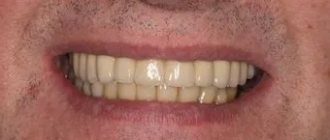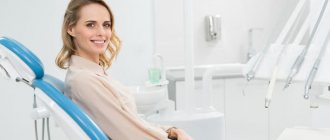Modern dental prosthetics can completely restore the aesthetics of the dentition and its chewing functions. People may face the need for surgical removal at any age. Among the achievements of orthopedic dentistry, anyone can choose a suitable replacement option. Dental prostheses are produced in different types, differing in the material of manufacture, cost, and service life. For the production of structures, alloys of precious metals, ceramics, special plastics, polymers, nylon and other types of raw materials are used.
There are two types of prosthetics after tooth extraction:
- Removable dental structures can be removed and put on by the patient as needed. The products are attached to the supporting teeth using hooks or micro-locks. For edentulous patients, models are used that are fixed to the gums using suction cups or a special gel.
- Fixed dentures are installed in the jaw (implants) or attached to supporting teeth (bridges).
Each category is represented by several options. Among them, dentists select the appropriate solution based on the condition of the oral cavity and the health of the patient.
Depending on the service life of the products, temporary and permanent dentures are distinguished. Models of the first type are designed to last only a few months. The products are used to temporarily close the postoperative gap.
Fixed dentures remain the most popular way to restore the beauty of a smile. This replacement option is more convenient compared to removable devices. It is easy to care for and helps preserve the natural functions of the dental system. Permanent prosthetics are performed in different ways:
- The installation of crowns made of metal ceramics or a metal alloy is performed on a previously prepared tooth. This method is used if the root is intact, but the top is destroyed.
- Implantation of one or more teeth involves inserting an artificial root into the jaw. A permanent or temporary crown is placed on it. This method is indicated for complete or partial edentia. Sometimes doctors use an implant as a support for a bridge.
- Bridges are placed after the amputation of several teeth located nearby.
- Adhesive structures are secured using an adhesive solution. In this case, there is no need to depulp the adjacent teeth. This restoration method is one of the most technologically advanced in orthopedic dentistry.
Prosthetics after tooth extraction and indications for the procedure
Installation of a denture allows you to completely restore the functional and aesthetic properties of the jaw apparatus. The indication for the procedure is single or multiple damage to the jaw as a result of trauma, surgical amputation due to advanced caries, or other diseases of the oral cavity.
If the crown is partially destroyed, a microprosthesis is installed instead of the usual one. This group includes inlays, veneers and ultraneers. The products effectively solve aesthetic problems with minimal trauma to natural bone and gum tissue.
Terms of treatment and duration of procedures
How quickly the prosthesis is installed depends on the type of orthopedic structure. Thus, temporary dentures can be fixed after 20-30 minutes.
Permanent dentures are placed when the wound heals and the inflammatory process stops, i.e. about three to four weeks from the date of removal. However, prosthetics are required for a maximum of six months, otherwise bone tissue atrophy will then begin and additional sinus lift surgery will be required.
The duration of the procedure also depends on the type of prosthesis used:
- The immediate prosthesis is placed in a few minutes. However, it must be taken into account that it is also necessary to take an impression and then make the structure, which takes at least one day;
- The bridge is installed in no more than two weeks. This period includes the preparation and manufacturing stage of the structure;
- installation of a clasp prosthesis requires about 7-10 days;
- plate structures are installed within 5-10 days;
- The implantation period can range from several days to several months. Everything will depend on the chosen technique.
Contraindications
Thanks to the variety of techniques for each person, you can choose a way to restore the beauty of your smile. All dentures have indications for use and contraindications. The decision to replace a lost element after amputation is made by the attending physician based on the results of dental diagnostics, taking into account the age and condition of the body.
As for the general reasons, experts do not recommend performing surgical procedures if you are pregnant, undergoing rehabilitation after a serious illness or complex operation, or are sick with ARVI. You should not install implants or dentures during periods of exacerbation of chronic diseases, exhaustion or acute stress.
Tell your doctor if you are allergic to anesthetics or take any medications. Some drugs affect blood clotting and the rate of tissue regeneration. This can create problems during the procedure and while the wound is healing.
Often, poor oral hygiene is an obstacle to treatment. This temporary contraindication can be eliminated through therapeutic measures.
Implant installation
Prosthetics on implants is recognized as the optimal way to restore the integrity of the dentition. But to use this method, you need to wait until the bone tissue is completely restored. As a rule, this takes from three to six months. The healing time depends on where the extracted tooth was located.
To perform this operation, the bone must have sufficient height and width. If hard tissue deficiency is diagnosed, bone grafting may be necessary. In this case, delayed implantation is planned, and it may take about a year before it takes place.
Installation of the prosthesis immediately after removal (within 24 hours)
Clients are always interested in how many days after an injury or surgery they can get dentures. Dentistry has express methods for instantly eliminating smile defects. There is no need to hide an ugly gap from others and experience discomfort when communicating! We are talking about simultaneous implantation, which is performed in one stage. The dentist installs an artificial root into the resulting hole and immediately puts on a crown, which is prepared in advance. It creates a load on the jaw apparatus and prevents atrophy.
Another option is immediate dentures, which are temporary and are designed for 3-4 months of use.
Bridge prosthesis in place of an extracted tooth
The design of a dental bridge consists of the main crowns for replacing missing units and two additional ones for fixing the prosthesis on the jaw. During the treatment process, the doctor grinds down the living teeth and attaches crown caps to them. Advantages of a dental bridge for the patient:
- durable permanent installation;
- affordable price;
- aesthetics.
Flaws:
- Delayed prosthetics. The minimum period when a bridge can be installed after tooth extraction is a month after the operation.
- Grinding healthy units. Physical damage to the integrity of the enamel and partially crowns.
- Excessive load on supporting teeth. And degradation of bone tissue under the overhanging part of the denture.
- Gradual loss of aesthetics and functionality. Due to tissue subsidence, a gap is formed between the denture and the gum, visible when speaking. Also, food particles get into the empty space, which often causes inflammation.
- Fragility. The prosthesis and supporting teeth are usually removed 5-7 years after installation.
Doctors explain not only how long after tooth extraction a bridge can be installed, but also why. 4-8 weeks is a reasonable interval, since the tissue at the site of the lost tooth should be completely restored. Otherwise, there is a risk of changing the shape of the gums under the installed prosthesis, and the likelihood of tissue injury at the time of prosthetics increases.
Expert opinion
Roman Borisovich Alekperov
orthopedic dentist
Experience: 24 years
If you are just planning to visit a surgeon for tooth extraction, consider the option of one-stage implantation. This unique method involves placing an implant into the resulting socket immediately after extraction. No additional manipulations - incisions or detachment of a mucosal flap, as with the classic protocol - are performed. This gentle method will allow you to resolve the issue of tooth restoration immediately at the time of its removal. Important: there are contraindications for immediate implantation! Please clarify the possibility of its use in your case during your consultation.
Prosthetics with a bridge structure
If the doctor and patient plan to install a dental bridge, then after extraction you will have to wait four to six weeks. This is the average time it takes for a hole to heal. Installation, fitting, and adjustment of a prosthesis are manipulations that can easily touch, injure, and infect healing tissues. Therefore, before they begin, the hole must be completely tightened.
After complex or multiple removals, healing time may increase. You will have to wait longer for prosthetics even if alveolitis has developed - an infectious inflammation of the tissues of the socket.
Gastrointestinal disorders
A person chews food mainly with chewing teeth, which patients are often in no hurry to restore. As a result, food before entering the stomach is crushed less well and is not so abundantly moistened with saliva, which contains enzymes that trigger the process of breaking down nutrients in the oral cavity.
Due to poor chewing, not only gastritis with constant dull pain in the epigastrium can appear, but also cholelithiasis, stool disorders, colitis and other unpleasant diseases.
Advantages of visiting Medikastom clinics
- A full range of services in the field of prosthetics. After removal, specialists can carry out both one-stage and any other interventions. Additionally, before prosthetics, a detailed general and dental examination will be carried out. Specialists will create a 3D computer model of implantation and develop a plan for its implementation. The doctor will coordinate all actions with you.
- Experienced specialists. All dental work is carried out by highly qualified doctors. Our employees are masters of their craft. They will quickly cope with both tooth extraction and other procedures. Doctors have hundreds of successfully performed implantations behind them.
- High standards of medical care. Specialists follow all safety protocols when treating and restoring teeth. In addition, doctors successfully implement modern techniques and advanced technologies.
- Patient-friendly service. You can make an appointment at any time convenient for you. We have no queues, and you can watch movies during the procedures.
- Convenient location of clinics. You can quickly reach any of them either by your own car or by public transport.
We will help you create a financial plan for dental restoration so that restoration optimally fits into your budget.
If you are interested in prosthetics after tooth extraction, make an appointment by calling +7 (499) 283-71-58.
Our 24-hour dentistry provides the widest range of services. We are always ready to provide you with services such as sinus lifting and bite correction with braces.
General recommendations
During the period of adaptation to dentures, it is recommended to stop eating solid foods and choose softer foods. It is recommended to eat slowly, cutting food into small pieces. You need to chew food on the right and left sides in turn. To restore chewing skills, pear or apple slices are suitable.
It is necessary to completely avoid chewing gum, toffees, toffees and other viscous, sticky products. They can cause disruption of the fixation of the prosthesis, its breakage, and injury to the mucous membrane.
Do not clean dentures with abrasives, alcohol, alkaline or acidic solutions. The use of hard toothbrushes is not recommended. You should not chew candy, nuts, or seeds.
If you have any doubts or need a professional opinion on a problem with your prosthesis, you can contact the Canadian Center for Innovative Technology and Neuromuscular Therapy for a consultation. Our specialists will answer all your questions!
Cost of services
The cost of services depends on:
- The number of missing elements of the dentition.
- The type of prosthesis or implants chosen.
- Difficulties in carrying out all manipulations, etc.
We don't inflate prices. Thanks to this, restoration is possible even on a limited budget. The doctor will draw up a financial treatment plan in advance. This will allow you to plan your expenses. In addition, we provide discounts and run special promotions. Thanks to this you can save money.
"Butterfly"
A removable microprosthesis “butterfly” comes to the rescue when 1-2 teeth are missing. The technique is used to eliminate defects in the frontal area. Its advantages:
- speed - 1-2 visits to the orthodontist;
- no need to grind adjacent teeth;
- high aesthetics;
- low price.
The “butterfly” can be made of metal ceramics, entirely of plastic on a cast frame, or with a metal wire fastening. The technique is not used to restore the dentition on the lateral areas of the jaw, which experience significant stress when chewing food.
The process of prosthetics begins with diagnosing the condition of the teeth, cleaning them from tartar, filling and removing teeth, treating gums and other measures. The period from the time of tooth extraction to the installation of a bridge, clasp or plate prosthesis is from 1 day to 1-2 months.
The technique of one-stage prosthetics is used for:
- absence of inflammatory processes and infections in the oral cavity;
- good condition of gums, teeth, bone tissue.
The general physiological condition of the patient is taken into account.
According to statistics, installation of removable dentures in place of extracted teeth is possible in 1-4 weeks.
It may take from several hours to several weeks to get used to. Not only the skill of the specialist, but also the psychological mood of the patient is of great importance. Pain may not appear immediately. Correction can be carried out no earlier than the next day, provided that the structure is in the mouth for at least 4 hours. Several adjustments may be needed.
In the first days, a speech defect is usually observed, its severity is determined by the degree of bulkiness of the structure. Patience and regular exercise will help you get rid of it in 1-3 days.
The service life of removable dentures is 5-10 years, determined by the condition of the gums and teeth (for clasp dentures).
Caring for removable dentures is similar to caring for living teeth - brushing and rinsing. Removable dentures should always be kept in a damp environment. Using a fixing cream or gel will ensure a tight fit of the structure to the gum and prevent food debris from getting under the denture. For disinfection, special antiseptic agents are used, available in the pharmacy chain.
Even if your teeth are completely missing, regular visits to the dental office are recommended to monitor the condition of the oral mucosa. If there are no problems, you should visit an orthopedic dentist at least once a year. The specialist will assess the condition of the structure and, if necessary, make corrections.
What is the essence of the methods?
Braces
Braces are orthodontic structures for correcting bites and moving teeth into the correct position. They are an arch with ligatures, dental clasps for fixation, made of metal, plastic, ceramics. There are:
- vestibular - installed on the outside of the teeth;
- lingual - fixed on the inside and not visible to others.
The purpose of the structures is to create pressure to move the tooth into the desired position.
The tooth root is connected to the bone tissue by ligaments. Under pressure they stretch, the crown and root parts move. The duration of treatment is determined individually, ranging from several months to several years.
Implantation
Implantation is a method of replacing a lost tooth with a titanium root and then installing an artificial crown on it.
The operation is performed under local anesthesia or sedation. The gums are peeled off, a hole is drilled in the bone tissue, into which a titanium rod is screwed. The implant is covered with gum, sutured and left alone until it engrafts with the bone. With classic two-stage implantation, the period lasts 3-6 months. After osseointegration, a crown is installed.
If there is not enough bone tissue, it is augmented before or during implantation. If osteoplasty is performed as a separate stage, it will take another 3-6 months for the bone material to heal.
What is cheaper - braces or implants with crowns?
Both methods cost approximately the same price.
In our Center, the cost of implantation consists of 3 items:
- Surgical stage. Provides manipulations for the introduction of a titanium pin with the inclusion of the necessary materials and services of an implantologist in the price. Cost - 65-85 thousand rubles.
- Crown installation. When the implant takes root, a crown is installed on it. Its price ranges from 48 to 55 thousand rubles, depending on the production technology.
- Bone growth. If the bone tissue is thinning, it will require preliminary extension, which will cost from 24 thousand rubles.
Total: the cost of implanting one tooth is from 137 thousand rubles.
During orthodontic treatment to replace one dental unit, row correction involves installing braces on both jaws. Options and combinations of designs differ, which is why the price ranges from 62-127 thousand rubles per jaw (the most expensive are made from sapphire). When installing braces on both jaws, the price doubles.
Total: to install the cheapest braces on both jaws you will need 124 thousand rubles.
When implantation is not possible
| Absolute contraindications | Relative restrictions* |
| Pathologies of immunity | Pregnancy and lactation |
| Severe systemic infectious diseases | Acute viral infections |
| Malignant processes | Exacerbation of chronic pathologies |
| Autoimmune diseases | After a heart attack or stroke |
| Age up to 18 years | Dental diseases on adjacent teeth (pulpitis, caries) |
| Pathologies of bone tissue | Periodontal problems (periodontitis in the acute phase) |
| Mental disorders | Blood clotting disorders |
* These contraindications are considered relative; after adjusting the health status, it becomes possible to install an implant.

